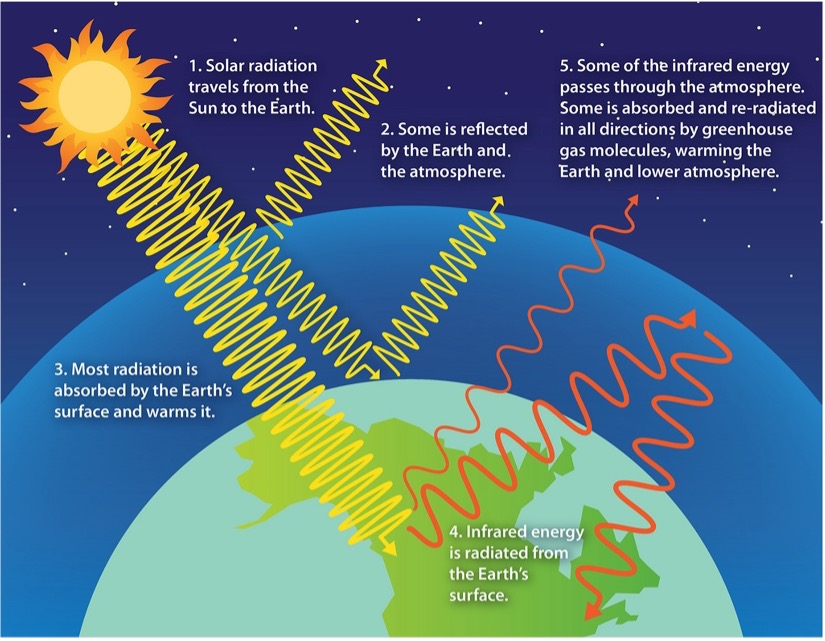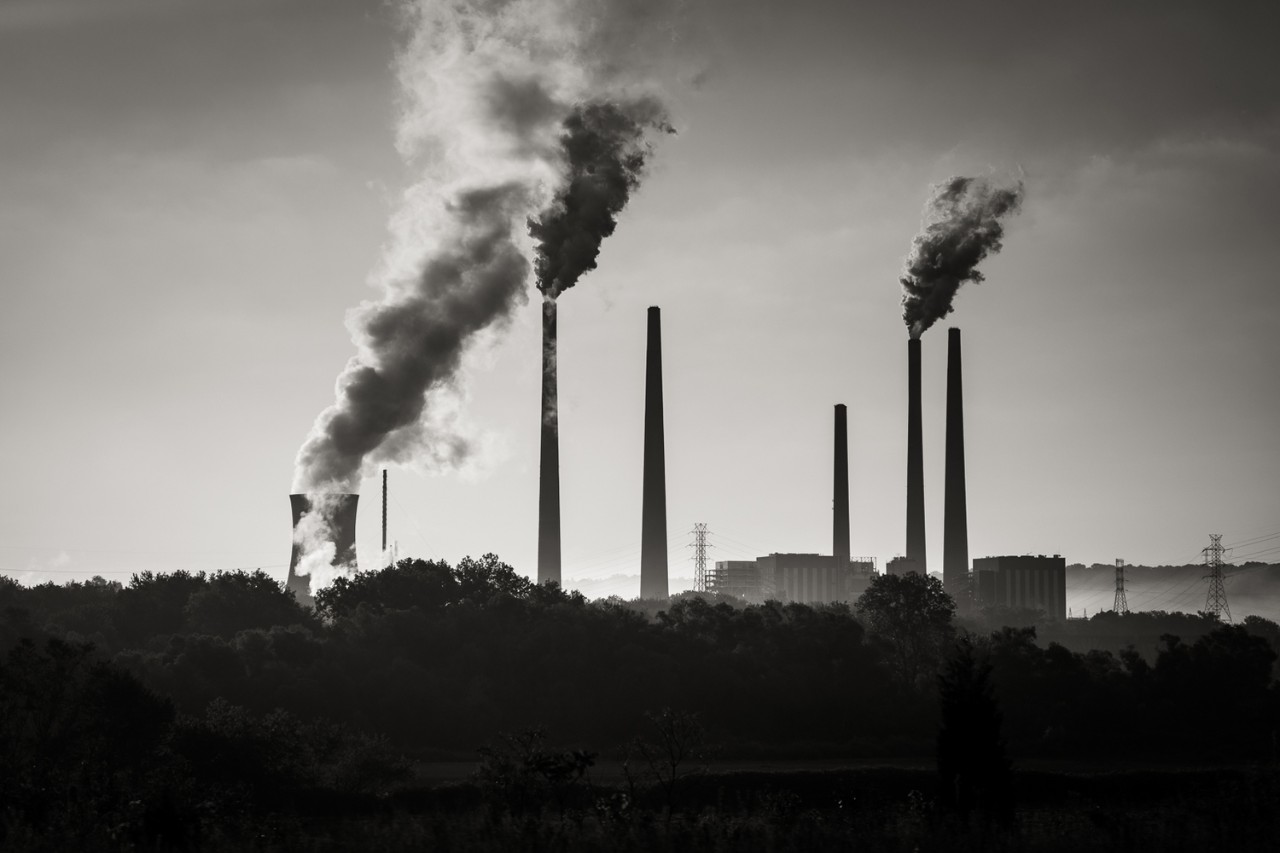
Understanding Climate Change
Understanding Climate Change

Earth’s Climate System
In order to understand climate change, one must first familiarize themselves with Earth’s climate system, which is comprised of the five following components:
- The atmosphere: contains all of the gases that cover Earth, including 78 percent nitrogen, 21 percent oxygen, 0.9 percent argon and 0.1 percent trace gases.
- The cryosphere: made up of all of Earth’s surface areas that contain frozen water in the form of ice or snow, including ice sheets, ice caps, glaciers, permafrost, frozen waters and snow-covered areas.
- The hydrosphere: includes all of Earth’s fresh and saline waters, both on the surface and below ground, including oceans, seas, rivers, lakes and aquifers.
- The lithosphere: the solid outer part of Earth that includes the crust and upper solid mantle.
- The biosphere: includes all the parts of Earth that contain life, whether on land, in water, or in the air.
Though all distinctly different, each component of the climate system listed above interacts with each other through different physical, biological and chemical processes. For example, plants (biosphere), utilize water (hydrosphere), sunlight, and carbon dioxide (atmosphere) for photosynthesis to create energy and oxygen.

Earth’s Atmosphere Is Like A Greenhouse
Since the end of the nineteenth century, scientists have come to understand that the natural warming of the Earth occurs when gases in the atmosphere absorb and re-radiate heat from the Sun back towards Earth’s surface. Known collectively as the “greenhouse effect,” due to our atmosphere’s ability to trap heat similar to the glass roof of a greenhouse, this natural phenomenon is facilitated by trace gases most commonly referred to as “greenhouse gases” (GHGs). Of the many different GHGs, the most important include carbon dioxide (CO2), methane (CH4), nitrous oxides (NOx) and water vapor.
As the Sun’s energy passes through the atmosphere, like light through a window, it is both absorbed and redirected in the following ways: 22.5 percent is reflected back to space by clouds and aerosols (fine solid or liquid particles suspended in the atmosphere); 19.5 percent is absorbed by the atmosphere; 9 percent is reflected back by the Earth’s surface; and 49 percent is absorbed by the surface. However, as the Earth’s surface begins to re-radiate the energy back out towards space, only 10 percent of it manages to escape to space, while the other 90 percent is absorbed by the GHGs in the atmosphere, thus contributing to further atmospheric warming.
Stability Begins With The Sun
When incoming radiation from the Sun equals the outgoing radiation emitted from all components of the climate system, the Earth’s climate is considered to be stable. However, a number of constant factors can impact a region’s climate, including its latitude, altitude, topography, and proximity to mountains and oceans. While locations situated at high latitudes receive less solar radiation, locations situated at lower latitudes receive more, like those near the Equator. This pattern stays true for altitude as well since, the higher up you go, the cooler it gets, which helps to explain why higher-altitude locations have climates that resemble higher-latitude locations.
In addition to latitude and altitude, physical topographic features, like the slope of the land, can impact the amount of sunlight that the Earth’s surface absorbs. Likewise, mountains, by interfering with the movement of different air masses, can influence the weather systems of surrounding areas by both producing and preventing cloud formation and precipitation. Finally, oceans also play a key role in moderating the temperatures of coastal areas, as well as the temperature differences between the land and the sea; these variations can produce winds that result in increased storm formation.
Delaware’s Changing Climate
Though Delaware is the second smallest state in the U.S., it is still large enough to produce some stark climatic differences across its land area. Since Delaware is part of the Delmarva Peninsula, its climate is greatly influenced by the Atlantic Ocean and Delaware Bay to its east and the Chesapeake Bay to its west. Additionally, with a mean elevation of only 60 feet and altitudes ranging from sea level (0 feet) at the coast to 450 feet above sea level at its highest point along the Pennsylvania border, Delaware’s status as the lowest-lying state in the nation also greatly impacts its climate. Measurements from weather stations across Delaware dating back to 1895 show that the state’s mean annual temperature has been rising at a rate of 0.2℉ per decade, or approximately 2℉ over the last century. As a result of this increasing temperature trend, Delaware experiences fewer nights with minimums below 32℉ and more nights with minimums above 75℉.
Regarding precipitation, rain patterns in Delaware remain highly variable with no clear trends on an annual average basis. However, there does appear to be an increase in precipitation occurring during the fall months, where statewide precipitation has been increasing at a rate of 0.27 inches per decade. Overall, trends over the historic record can be used to project how Delaware’s climate might continue to change in the future. These types of analyses indicate that, as a state, Delaware will continue to warm and will experience more frequent and more intense precipitation events.
Human Influences on Climate Change
Though the greenhouse effect is a natural climatic process, the concentration of GHGs in the atmosphere has significantly increased since the Industrial Revolution, a period of major innovation and mechanization in eighteenth century Great Britain that transformed agrarian, rural societies into industrialized, urban ones. Since this time, global temperatures have increased with the Intergovernmental Panel on Climate Change (IPCC), a large global group of independent scientific experts within the United Nations, concluding that atmospheric carbon dioxide levels in recent centuries have increased from 280 to 400 parts per million as a result of human produced GHGs. Though a rise in CO2 in the atmosphere can be caused by a number of factors, it is primarily attributed to the burning of fossil fuels (like oil, natural gas, and coal) for transportation, electricity production and other industrial processes. In addition to CO2, methane and nitrous oxide concentrations in the atmosphere have also increased as a result of agricultural expansion, soil management activities and the application of nitrogen-based fertilizers.

Delaware Climate Change and Environmental Resources
Office of the Delaware State Climatologist – the principal scientific extension service for weather and climate information in Delaware, located within the Department of Geography in the College of Earth, Ocean and Environment at the University of Delaware.
Delaware Climate Data – climate data created and curated by the Office of the Delaware State Climatologist which includes climate summary maps, climate normals (three-decade averages of temperature and precipitation) and precipitation frequency estimates for the state.
Delaware Climate Projections Portal – provides data visualizations, data downloads and general climate modeling information from the Delaware Climate Change Impact Assessment (DCCIA)
Delaware Environmental Observing System (DEOS) – a real-time environmental service, created by the Office of the Delaware State Climatologist, that provides the public with access to the latest conditions, summaries and data and monitoring applications
Delaware Environmental Monitoring & Analysis Center (DEMAC) – promotes and coordinates environmental monitoring efforts and provides an effective, user-friendly interface that researchers can use to share their findings with the public
Delaware Sea Grant – an education and outreach arm of the UD College of Earth, Ocean and Environment, Delaware Sea Grant helps communities use, manage and conserve the state’s coastal resources by prioritizing resilience and fostering environmental stewardship
Delaware Cooperative Extension – an education and outreach arm of the UD College of Agriculture and Natural Resources, Cooperative Extension connects the public with university knowledge, research, and resources to address, youth, family, community and agricultural needs
DNREC Division of Climate, Coastal, and Energy – a division of the Delaware Department of Natural Resources and Environmental Control that utilizes applied science, education, policy development and incentives to address Delaware’s climate, energy and coastal challenges
UD Cooperative Extension
This institution is an equal opportunity provider.
In accordance with Federal law and U.S. Department of Agriculture policy, Cooperative Extension is prohibited from discriminating on the basis of race, color, national origin, sex, age, or disability.
